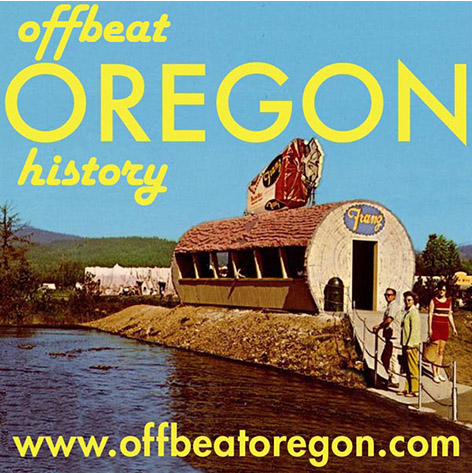
Looking for more?
On our Sortable Master Directory you can search by keywords, locations, or historical timeframes. Hover your mouse over the headlines to read the first few paragraphs (or a summary of the story) in a pop-up box.
... or ...
BEND, DESCHUTES COUNTY; 1960s:
Astronaut left a piece of Oregon lava on the moon
Audio version: Download MP3 or use controls below:
|

Off went the letter, and Watson thought little more of it. It had been a long shot, of course, and there was no guarantee Irwin even remembered who Watson was. Blast-offA few months later, on July 26, 1971, Irwin blasted off from Cape Canaveral, packed into the Apollo 15 module with commander David Scott and command-module pilot Alfred Worden. Scott and Irwin spent three days prowling the surface of the moon while Worden orbited above them. And a few weeks after their return, Watson got a letter from Irwin. “I did carry your sliver of lava to the moon and left it there,” Irwin wrote — and enclosed an autographed photo of it, with the tiny chip of Oregon denoted with an arrow and the words “Oregon lava on the moon!” Watson treasured the letter, picture and the chunk of rock that he broke the lunar sliver off of for the rest of his life. And, of course, he never looked at the moon the same way again. NASA initially skepticalIrwin never told his higher-ups at NASA about the lava, though. This was probably because he and Scott were reprimanded after their return. It seems they’d cut a private deal with a postage stamp dealer to haul a bunch of postal covers up to the moon with them, to be autographed and sold upon their return. With Irwin and Scott in that kind of hot water, they were probably reluctant to admit to having brought up any other unauthorized cargo. A short (1:12) video by historian Darrell Jabin about the astronauts in Oregon, part of his "Did You Know About Oregon?" series. Click here to see it on YouTube. (Video: Darrell Jabin)And indeed, NASA officials were at first skeptical about the claim of Oregon lava on the moon. “I don’t recall any stories about Jim Irwin taking a rock from Oregon and placing it on the surface of the moon,” NASA historian Glen Swanson told Central Oregon journalist Melany Tupper in a 2002 letter. “I think this is pretty unlikely due to the severe weight restrictions and time limitations that the crew had on the lunar surface.” However, perhaps the letter got NASA thinking about it, because a few years later the space agency got a similar request from Oregon Public Broadcasting reporter Sierra Jenkins, and Eric M. Jones, editor of the Apollo Lunar Surface Journal, took a closer look at some of the photographs from the mission. Cross-referencing them with Irwin’s letter to Watson, he was able to identify the rock, and confirmed the story as almost certainly true. Thus, we can consider — with apologies to martyred Great War poet Rupert Brooke — that there’s some corner of a foreign world that is forever Oregon.
|
©2008-2023 by Finn J.D. John. Copyright assertion does not apply to assets that are in the public domain or are used by permission.




